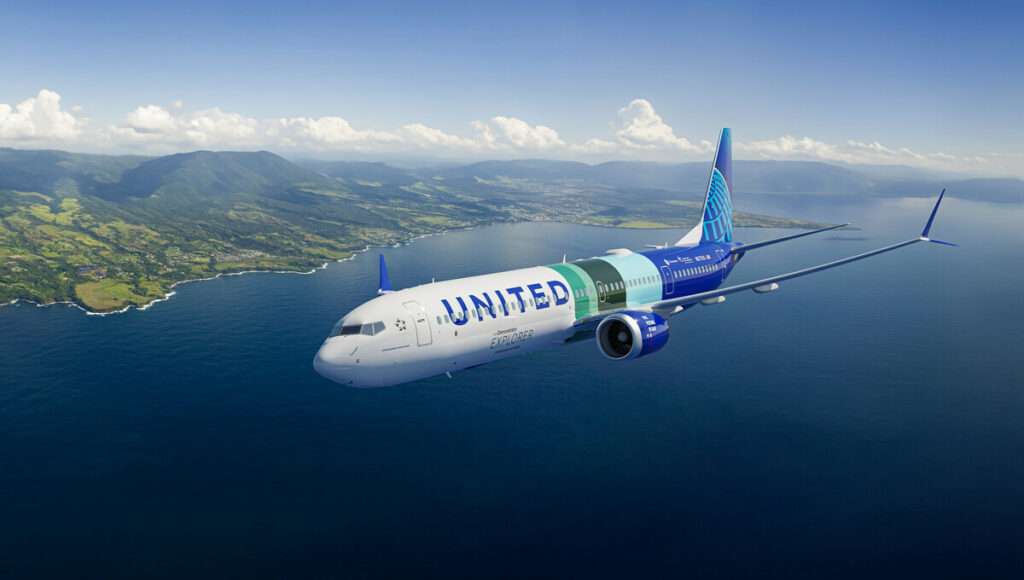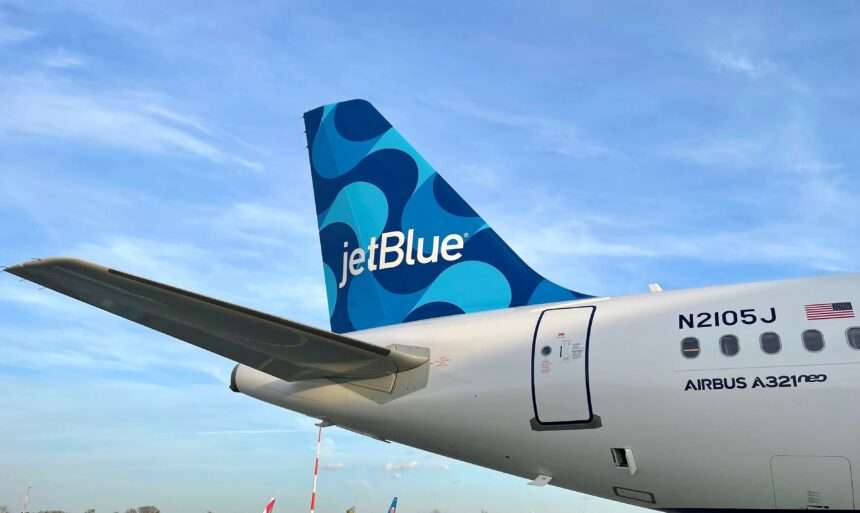In a collaboration aimed at bolstering sustainability in aviation, industry giants Boeing, NASA, and United Airlines have embarked on an ambitious in-flight testing program to reduce contrails and emissions.
Their mission: to measure the environmental impact of sustainable aviation fuel (SAF) on contrails and non-carbon emissions while significantly reducing the fuel’s overall climate footprint.
Boeing’s ecoDemonstrator Explorer
Boeing’s ecoDemonstrator Explorer, a state-of-the-art 737-10 aircraft destined for service with United Airlines, will serve as the testbed for this crucial experiment.
The aircraft will operate with a dual-fuel system, comprising 100% SAF and conventional jet fuel in separate tanks. During testing, these alternate fuels will be rigorously examined for their environmental effects.

NASA’s Role in Emissions Measurement
NASA’s DC-8 Airborne Science Lab, renowned for its research capabilities, will fly in the wake of the commercial jet, meticulously measuring emissions generated by each fuel type and the intriguing phenomenon of contrail ice particles.
NASA satellites will capture images of contrail formation as part of this comprehensive testing process.
[monsterinsights_popular_posts_inline]
The ultimate aim of this collaborative effort is to unravel how advanced fuels, innovative engine combustor designs, and other cutting-edge technologies can contribute to reducing atmospheric warming.
A prime focus of these tests will be the examination of SAF’s impact on contrails – those long, slender clouds formed when airplanes traverse cold, humid air.
Although the full extent of their effects remains a subject of ongoing research, it’s been suggested that certain contrails can contribute to heat retention in the atmosphere.

Key Research Contributors
This monumental project enjoys the support of several influential organizations:
U.S. Federal Aviation Administration (FAA): The FAA is providing funding through the ASCENT Center of Excellence, underlining the importance of this research in shaping the future of aviation.
GE Aerospace: A major player in the aerospace industry, GE Aerospace is contributing technical expertise and project funding, further propelling the project’s success.
German Aerospace Center (DLR): The DLR, with its vast experience in aviation research, is providing expert knowledge and specialized instrumentation to bolster the research initiative.
The Broader Context of SAF
This project represents the latest phase in a longstanding partnership between Boeing and NASA, dedicated to scrutinizing the potential of SAF in reducing emissions and fostering environmental benefits.
SAF, derived from sustainably produced feedstocks, has the potential to slash emissions by up to 85% over its lifecycle, making it a game-changer for the aviation industry. Notably, SAF produces fewer soot particles, a factor that can significantly improve air quality near airports.
Insights from Key Stakeholders
Commenting on this vital collaboration, Boeing’s Chief Sustainability Officer, Chris Raymond, expressed his support:
“We are honored to collaborate with NASA, United Airlines, and other valued partners on research that will strengthen the industry’s understanding of the benefits of SAF beyond reducing carbon emissions.”
“We’ve solved hard problems before, and if we continue to take meaningful actions, I’m confident we’ll achieve a more sustainable aerospace future, together.”
Rich Wahls, NASA mission integration manager for the Sustainable Flight National Partnership, highlighted the significance of flight testing in understanding sustainable aerospace innovations:
“Flight testing is complex and resource-intensive, yet it’s the gold standard for understanding how sustainable aerospace innovations affect changes in contrails and climate.”
“This is why we’re bringing NASA’s DC-8 to bear on this collaboration, where the valuable flight data will improve our predictive models.”
Lauren Riley, United Airlines’ Chief Sustainability Officer, emphasized the multifaceted benefits of the SAF transition:
“This collaboration between Boeing, NASA, and United has the potential to not only help us better understand contrails but to provide the full scope of what our transition to SAF can provide beyond greenhouse-gas reductions.”
Mohamed Ali, Vice President of Engineering at GE Aerospace, proudly supported the research collaboration, highlighting its significance in advancing sustainable flight:
“We at GE Aerospace proudly support this groundbreaking research collaboration that will deepen our scientific understanding of the impact of SAF on emissions for a more sustainable future of flight.”
Markus Fischer, DLR Divisional Board Member for Aeronautics, stressed the importance of international cooperation in achieving climate-compatible aviation: “To achieve climate-compatible aviation, we need close international cooperation.”
“The German Aerospace Center has decades of experience in research on the climate impact of the entire aviation system by advancing measurement technology and simulations.”
The ecoDemonstrator Program
Boeing’s ecoDemonstrator program, an initiative that delves into short-term, specific test projects, expanded this year to include Explorer airplanes.
SAF emissions ground testing was previously conducted on an Alaska Airlines 737-9 in 2021, followed by testing on ecoDemonstrator 777-200ER and 787-10 flight-test jets in 2022.
Boeing has set a bold commitment to deliver commercial airplanes compatible with 100% SAF by 2030.
It’s important to note that the 737-10, a flagship aircraft in Boeing’s single-aisle 737 MAX family, is at the forefront of aviation sustainability. With a 20% reduction in fuel consumption and emissions compared to its predecessors, it represents a significant step toward greener aviation.

Click the banner to subscribe to our weekly newsleter.









